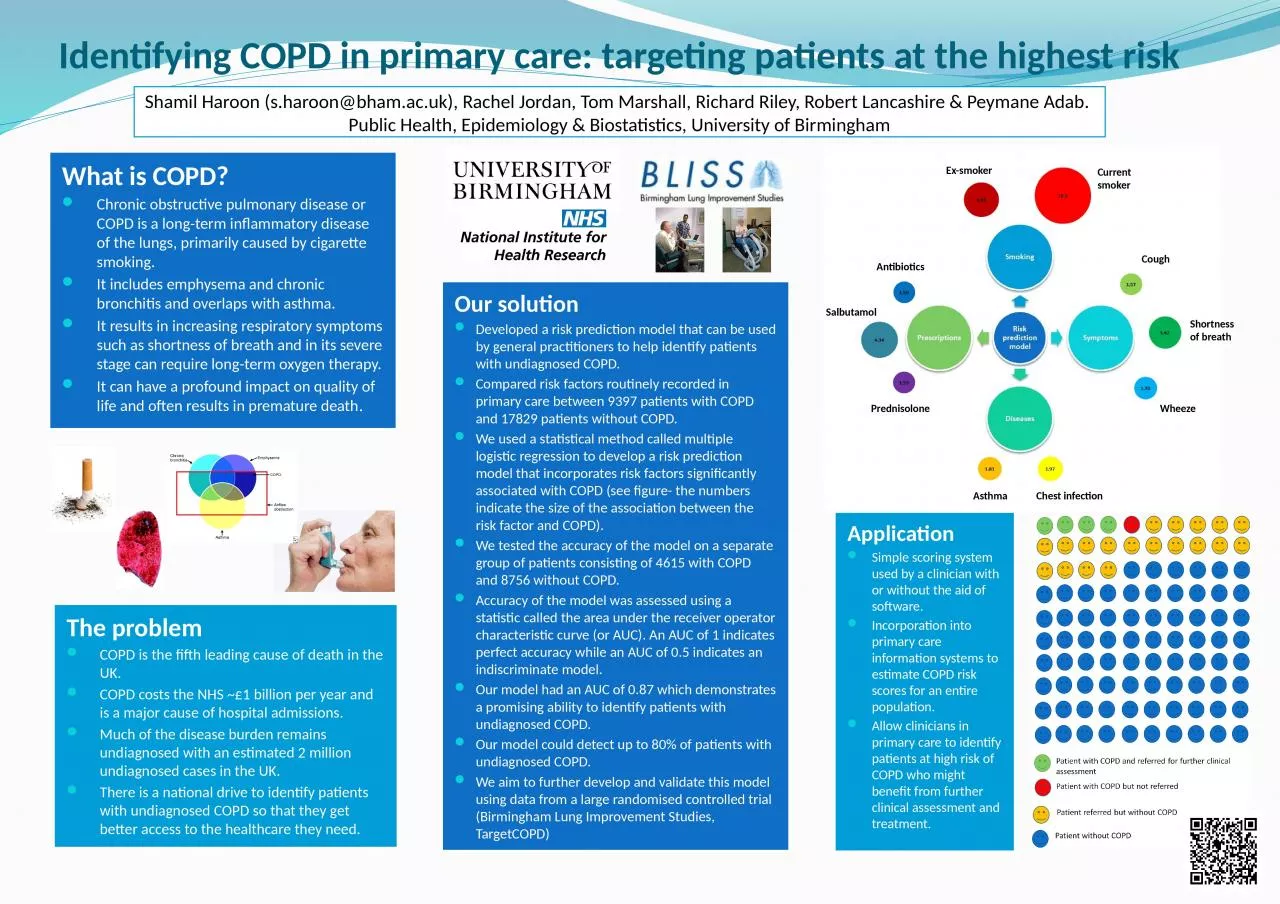

targeting patients at the highest risk What is COPD Chronic obstructive pulmonary disease or COPD is a longterm inflammatory disease of the lungs primarily caused by cigarette smoking It includes emphysema and chronic bronchitis and overlaps with asthma ID: 931922
Download Presentation The PPT/PDF document "Identifying COPD in primary care:" is the property of its rightful owner. Permission is granted to download and print the materials on this web site for personal, non-commercial use only, and to display it on your personal computer provided you do not modify the materials and that you retain all copyright notices contained in the materials. By downloading content from our website, you accept the terms of this agreement.
Slide1
Identifying COPD in primary care: targeting patients at the highest risk
What is COPD?Chronic obstructive pulmonary disease or COPD is a long-term inflammatory disease of the lungs, primarily caused by cigarette smoking.It includes emphysema and chronic bronchitis and overlaps with asthma.It results in increasing respiratory symptoms such as shortness of breath and in its severe stage can require long-term oxygen therapy.It can have a profound impact on quality of life and often results in premature death.
The problemCOPD is the fifth leading cause of death in the UK.COPD costs the NHS ~£1 billion per year and is a major cause of hospital admissions.Much of the disease burden remains undiagnosed with an estimated 2 million undiagnosed cases in the UK.There is a national drive to identify patients with undiagnosed COPD so that they get better access to the healthcare they need.
Current
smoker
Ex-smoker
Cough
Shortness of breath
Wheeze
Antibiotics
Salbutamol
Prednisolone
Asthma
Chest infection
Our solutionDeveloped a risk prediction model that can be used by general practitioners to help identify patients with undiagnosed COPD. Compared risk factors routinely recorded in primary care between 9397 patients with COPD and 17829 patients without COPD.We used a statistical method called multiple logistic regression to develop a risk prediction model that incorporates risk factors significantly associated with COPD (see figure- the numbers indicate the size of the association between the risk factor and COPD).We tested the accuracy of the model on a separate group of patients consisting of 4615 with COPD and 8756 without COPD.Accuracy of the model was assessed using a statistic called the area under the receiver operator characteristic curve (or AUC). An AUC of 1 indicates perfect accuracy while an AUC of 0.5 indicates an indiscriminate model.Our model had an AUC of 0.87 which demonstrates a promising ability to identify patients with undiagnosed COPD.Our model could detect up to 80% of patients with undiagnosed COPD.We aim to further develop and validate this model using data from a large randomised controlled trial (Birmingham Lung Improvement Studies, TargetCOPD)
ApplicationSimple scoring system used by a clinician with or without the aid of software. Incorporation into primary care information systems to estimate COPD risk scores for an entire population.Allow clinicians in primary care to identify patients at high risk of COPD who might benefit from further clinical assessment and treatment.
Shamil Haroon (s.haroon@bham.ac.uk), Rachel Jordan, Tom Marshall, Richard Riley, Robert Lancashire & Peymane Adab. Public Health, Epidemiology & Biostatistics, University of Birmingham